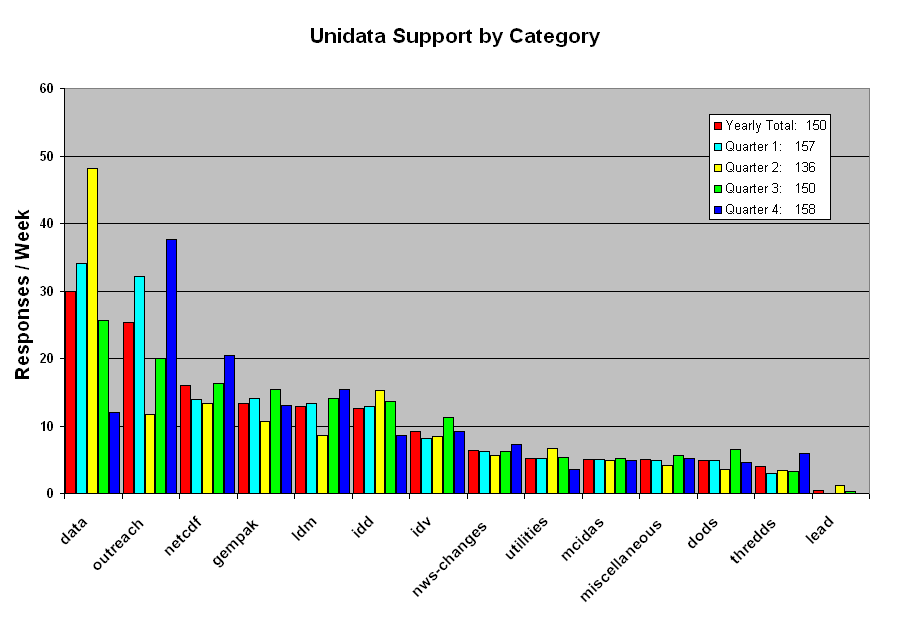As reported in the April Usercomm/Polcomm status report, the UPC has been investigating ways to streamline its User Support process. As a reminder, the overall object of the investigation is to implement a new system that:
Our approach was to identify existing support systems that, at a minimum, offer features contained in our existing inquiry tracking system and provide key features or facilities to implement key features that were deemed mandatory in a new system including the ability for the end user to open, modify and close their own inquiry, and comment on support that they have received.
Eight helpdesk packages were reviewed for features, extensibility, and cost effectiveness. Two of the packages reviewed were brought in-house for testing:
Even though the Request Tracker (RT) appeared to be the easiest for us to extend, we decided to implement use eSupport since it appeared to contain virtually all of the features that we consider to be mandatory in a support system.
At the time of the spring Policy Committee meeting, eSupport was undergoing active development at Kayako Web Solutions, Ltd. The promise of the features advertised for the new eSupport release, v3, and the perception of its impending release convinced us that we should directly implement v3 instead of v2 and then upgrade (developers' estimates for availability for v3 were early to mid-June). Coupled with staff's focus on the 2005 series of training workshops, Kayako's release of v3 in late July put us two months behind our target implementation of eSupport. Moreover, eSupport v3 continues to rapid evolution as long term eSupport users report bugs and request feature enhancements. Given this situation, the decision was made to not begin using eSupport in the Unidata Version 2 web rollout. Instead, we have been experimenting with eSupport v3 configurations on our web development machine.
We are planning to introduce eSupport to the community in a test mode in October. During the test period, we will be soliciting community input on features, ease of use, and performance. We will inform the community of the availability of the new support facilities through our usual channels: community email list announcements and the monthly electronic Newsletter.

Above are histograms that portray the number of Unidata email responses for categories of support for a one year period ending September 12, 2005. The histograms are arranged by yearly activity averages with the highest on the left and lowest on the right. Each quarter year within the period is depicted from oldest to newest from left to right. The number of responses has been normalized to weekly averages so that the support load over the various periods can be easily compared.
Total support averaged 150 responses/week over the entire year; 157 for the first quarter; 136 for the second quarter; 150 for the third quarter; and 158 for the current quarter.
Individual support activities included in the categories depicted above are listed in the following table.
| Category | Packages, Groups, and Lists |
| ldm | ldm, ldm-users-list |
| idd | gozer, idd, idd-antarctic idd-brazil, idd-caribe, idd-inject, idd-status, suominet, venezuela |
| data | casestudies, casestudies-list, conduit, c2-linda, craft, level2-linda, craft-nws, craft-ty, datastream, difax, level2, level2-ty, noaaport, noaaport-ty |
| netcdf | data-models, netcdf, netcdfgroup-list, netcdf-hdf-list, netcdf-java, netcdf-perl |
| gempak | gempak, gembud-list |
| mcidas | mcdevelop, mcidas, mcidas-list |
| dods | dods, dods-core, dods-list, dods-tech |
| nws-changes | nws-changes |
| outreach | agu-linda, ams-linda, announce, barbados-ty, cbmet-ty, chile-ty, egrants, egy-linda, external, iai-ty, noaa-linda, nws-linda, meteoforum-ty, unidata, workshop |
| idv | idv, idvlist, idvsteering, metapps, visad-list |
| utilities | decoders, ldm-mcidas, udunits |
| miscellaneous | misc, license, network, notrack, platforms, wxp, wxp-list |
| thredds | java-dev, thredds |
| lead | lead |
These numbers and conclusions should not be taken too literally, for several reasons: